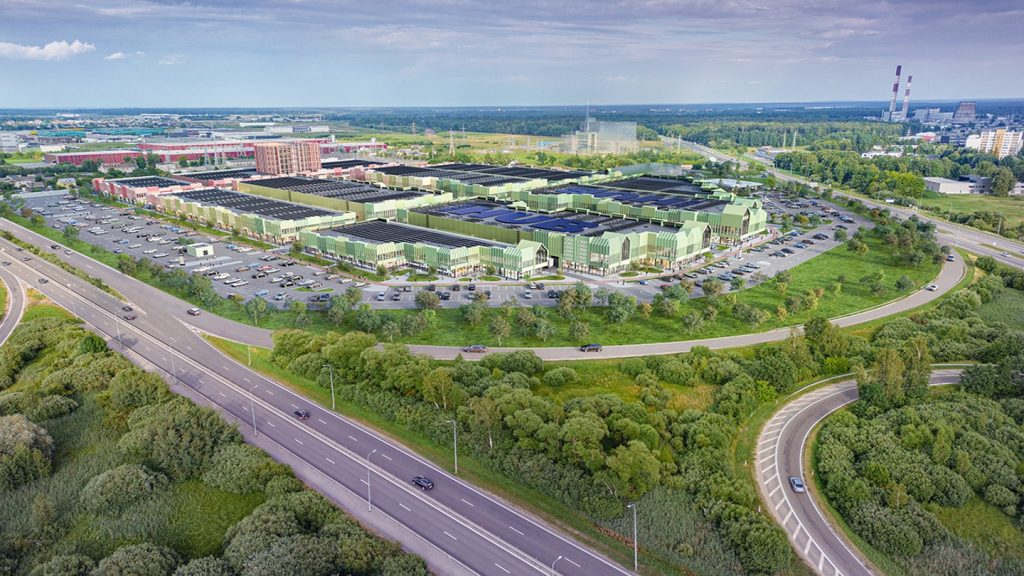
‘Why are the cities we are building different from the cities we like?’ That was the question posed by Alsop MD Colin Gilmore-Merchant at his LEAF workshop ‘Regeneration and Planning Issues’, sparking a lively discussion among the attendees. A clear consensus nevertheless emerged: the architectural community needs a new approach to urban developments.
Alsop has recently participated in competitions focusing on urban planning for the so-called ‘declining cities’ of the North of England.
When the Alsop team looked into the architectural reality of the region, it became clear that there was a danger of planners repeating old mistakes. But functionality and creativity needn’t be mutually exclusive.
Urban regeneration offers a remarkable opportunity to make a lasting impression, and Gilmore-Merchant is a firm believer in involving the public in the design process: ‘Our profession should empower the people. After all, they are the ones that will have to live in our creations.’ The important point is to engage local people before addressing the local authorities. All the architects at the seminar said they had experienced resistance on this point from planners, but could not see who they were trying to protect.
REBUILDING BRADFORD
See Also:
An example of the ‘people’ approach to urban planning is the large-scale regeneration of Bradford city centre in the UK. Before starting work on any development plans, Alsop decided to organise a workshop for local people. Having advertised a weekend workshop in local newspapers with the headline ‘Your city is changing: why not have your say?’, the firm hoped to discover what kind of environment the community really wanted to live in.
How well do you really know your competitors?
Access the most comprehensive Company Profiles on the market, powered by GlobalData. Save hours of research. Gain competitive edge.

Thank you!
Your download email will arrive shortly
Not ready to buy yet? Download a free sample
We are confident about the unique quality of our Company Profiles. However, we want you to make the most beneficial decision for your business, so we offer a free sample that you can download by submitting the below form
By GlobalDataThe workshop took place in a tent, with ages ranging from 15 to 60. Abstract shapes were hung inside the marquee to inspire a feeling for design and geometry, and the attendees exchanged ideas with the entire Alsop team. People were encouraged to draw their ideas on paper tablecloths.
Alsop filmed these brainstorming sessions and a few weeks later played the results back to the community in a local cinema. During the post-viewing feedback session, more focused ideas emerged and Alsop responded with a master plan reflecting the community’s main ideas, such as access to the river, which was previously underground.
Gilmore-Merchant concluded that consultancy sessions with the public could help overcome planning resistance. Michelle Lavelle from 4D Landscape Design agreed, adding that, in her experience, highways planners are the most common obstacle in preventing projects from being realised. In the case of Bradford, however, planning permission was given within two years, which underlines the difference ‘people’ consultancy can make in getting the go-ahead for urban construction.
Politicians and local authorities will most likely try to avoid a public debate. Nic Allen of Devereux Architects Ltd observed that the chances of politicians supporting controversial buildings are remote, as their term of office often comes to an end before the completion date. But public support can make that decision a lot easier, especially if this support translates into votes.
APPLYING THE MODEL
Historically, this interactive method of working began in the USA with the practices of the new urbanists. The typical procedure in the USA is for the developers to invite the community, politicians, the press and landscape architects to a roundtable discussion. On average, these collective meetings tend to produce a consensus within a week.
However, a number of attendees questioned whether this model could be adopted in other countries, and if so, how. In mainland Europe, for example, there are plenty of obstacles. Silja Tillner of Tillner & Partner revealed that local planners in Austria would not be pleased if they felt that the ‘unqualified’ public were doing their job for them. HOK’s Michael O’Con claimed that the response would be much the same in the Netherlands.
Countries in northern Europe such as the Netherlands and Germany have encouraged public participation in ‘green structure’ city planning for many years, but the urban structures already in place lack flexibility due to the strict division and allocation of residential, commercial and educational areas. These structures often make change a difficult and lengthy procedure.
Michel O’Con acknowledged these difficulties: ‘You can influence the existing structure, but it takes time. In Sweden, even height and colour are predetermined.’ The massing of buildings is equally strict elsewhere in Europe, the UK being a notable exception. This does give UK projects a certain degree of flexibility, but according to Peter Eaton of Aukett Fitzroy Robinson: ‘In the UK, they are sitting on the fence. The government is trying to please everyone, but has failed to establish clear regulations to work with.’ He predicted that, while regeneration efforts in the UK would continue to grow, working with the public would not always be as straightforward as the Bradford project. Nevertheless, he believed that on the whole it would create a sense of local involvement in the construction.
The next day, at the LEAF Awards, Colin Gilmore-Merchant accepted the award for ‘Best Use of Technology within a Large Scheme’ on behalf of Alsop, for the design of the new research laboratory at Queen Mary, University of London. The design is notable for the way it incorporated the ideas of the lab researchers who would be working in the building, and the award underlines the enormous potential of such an approach.




